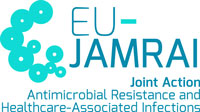Step by step guide for the implementation and assessment of SPOC
A Small Private Online Course (SPOC) is a focused online learning experience designed for a limited, specific group of participants (e.g., employees within an organization, students in a particular university program, a professional network), rather than the massive, open enrollment characteristic of MOOCs. SPOCs often leverage the rich multimedia content and flexible delivery of online learning but aim to foster greater interaction, provide more personalized feedback from instructors/tutors, encourage a stronger sense of community among learners, and typically achieve higher completion rates. They are frequently used as a component of blended learning strategies or in flipped classroom models, combining online modules with face-to-face sessions or practical application.
Table of contents

Planning a SPOC
The following steps should be taken into consideration when planning a SPOC on AMR/AMS:
- Identify Target Group and Specific AMR/AMS Learning Needs: Define a clearly demarcated group of professionals (e.g., a hospital’s ICU nursing team, veterinarians in a specific agricultural sector, public health officials working on a regional AMR plan) and their specific, advanced, or contextualized AMR/AMS learning objectives.
- Tailored Curriculum and Content Design: Develop or adapt specialized AMR/AMS content that is highly relevant to the target group’s professional context, roles, and existing knowledge base. This can include online modules with videos, targeted readings, interactive case studies, quizzes, and collaborative tasks. Existing MOOC content can sometimes be repurposed and enriched for a SPOC. (Vaysse et al.,2018, designed a SPOC with online modules (videos, documents, quizzes) for medical residents; Luo et al., 2022, combined MOOC content with offline classroom interaction in a SPOC model).
- Platform Selection and Restricted Access: Utilize a Learning Management System (LMS) or a dedicated online course platform that allows for restricted enrollment and management of a private cohort.
- Fostering Interaction and Collaboration: Design activities that promote significant interaction among participants and between participants and instructors/tutors. This includes moderated discussion forums, collaborative projects, peer review activities, and potentially synchronous online sessions (e.g., webinars, Q&A with experts). (Ruiz-Palmero et al., 2020, included forums and tasks in their SPOC design; Law et al., 2020, used interactive discussion forums in their SPOC-Flipped classroom).
- Integration with Blended Learning (Optional but Common): SPOCs are often effectively integrated into a blended learning framework. Online modules can provide foundational knowledge, which is then applied or deepened through subsequent face-to-face workshops, simulation exercises, practical skill sessions, or complex case discussions. This is also characteristic of flipped classroom approaches. (Vaysse et al., 2018, combined their SPOC with a final face-to-face interactive session; Law et al., 2020, describe a SPOC-Flipped classroom model).
- Active Facilitation and Personalized Support: Provide active facilitation and more personalized support from instructors or tutors than is typically feasible in a MOOC. This includes guiding discussions, providing detailed feedback on assignments, and addressing individual learner queries. (Colomo Magaña et al., 2020, highlight the potential for greater tutor interaction in SPOCs; Sanongdej, 2021, mentions instructor feedback in a SPOC for nursing students).

Defining roles in a SPOC
Facilitator’s role (Instructor/Tutor/Course Designer): Design or adapt specialized AMR/AMS content tailored to the private cohort. Actively facilitate online discussions and collaborative group work. Provide timely, personalized, and constructive feedback on assignments and contributions. Lead and integrate any associated face-to-face or synchronous online sessions. Foster a strong sense of learning community and rapport within the smaller group.
Participant’s role: Actively engage with all online course materials and activities. Participate consistently in online discussions and collaborative projects. Complete assignments to a high standard. Attend and actively contribute to any blended face-to-face or synchronous sessions. Interact meaningfully with peers and instructors, leveraging the smaller group size for deeper learning and networking.

Assessing a SPOC
Methods
- Formative and Summative Assessments: Online quizzes with automated feedback, submission of graded assignments (e.g., case analyses, reflective essays, project proposals) with detailed instructor feedback, assessed participation in online discussions or forums.
- Collaborative Work Evaluation: Assessment of collaboratively produced projects or presentations.
- Performance in Blended Components: If applicable, assessment of skills or contributions during face-to-face workshops or synchronous sessions.
- Knowledge and Skill Gain: Pre- and post-course tests to measure improvements in AMR/AMS knowledge, problem-solving abilities, or specific skills. (Vaysse et al., 2018, showed improved knowledge post-SPOC).
- Learner Satisfaction and Feedback: Detailed surveys on participant satisfaction with the course content, methodology, level of interaction, quality of facilitation, and overall learning experience. (Ruiz-Palmero et al., 2020, used a questionnaire to assess student satisfaction and various aspects of the SPOC design).
Tools
LMS-native assessment and grading tools, online submission platforms for assignments, video conferencing tools for synchronous sessions or blended components, shared document platforms for collaborative work, detailed rubrics for assignments and projects, peer assessment tools, comprehensive satisfaction and course evaluation surveys.

Suggested SPOC prototype
Target Audience: Legislators and Authorities, Antimicrobial Manufacturers, Prescribers, Dispensers, Clinical Profiles, Researchers, Educators.
Learning Objectives:
- Enhance participants’ ability to collaboratively manage complex AMR patient cases using advanced stewardship principles.
- Develop interprofessional communication and decision-making skills essential for effective hospital AMS teams.
- Facilitate the critical appraisal and application of new evidence and guidelines in managing challenging AMR infections.
- Enable teams to design or refine a specific AMS quality improvement initiative for their local hospital setting.
Curriculum/Activities:
A 6-week online SPOC for pre-formed interprofessional teams (e.g., 1 doctor, 1 pharmacist, 1 nurse per team) from different hospital units or institutions.
Online Modules (Weeks 1-4): Delivered via LMS, covering topics like: Advanced diagnostics for AMR, managing infections due to multi-drug resistant organisms (MDROs), PK/PD optimization for difficult-to-treat infections, communication strategies for AMS interventions, principles of AMS audit and feedback. Content includes expert video lectures, key readings, and interactive case scenarios. Teams work on module-based tasks collaboratively.
Interactive Discussion Forums: Each module has a private forum for intra-team discussion and a shared forum for inter-team discussion and Q&A with expert facilitators.
Synchronous Online Workshop (Week 5): A live, facilitated online workshop where teams present their analysis of a complex AMR case study and receive peer and expert feedback. (Combines online learning with synchronous interaction, similar to Bansal and Singh (2015) who used online resources in a classroom setting).
AMS Project Development (Weeks 1-6): Throughout the SPOC, teams work on developing a proposal for a specific AMS quality improvement project relevant to their setting.
Final Presentation (Week 6): Teams present their AMS project proposals in a final live online session for peer and expert review. (Reflects blended approach seen in Vaysse et al., 2018).
Evaluation of the Prototype’s Effectiveness:
- Assessment of the quality, feasibility, and evidence-base of the final AMS project proposals developed by each team.
- Evaluation of team performance and interprofessional collaboration during the synchronous online workshop and case presentations.
- Pre- and post-SPOC assessments measuring changes in advanced AMR/AMS knowledge, clinical reasoning, and confidence in managing complex cases. (Vaysse et al., 2018, measured knowledge improvement).
- Participant satisfaction surveys focusing on the relevance of content, effectiveness of the blended format, quality of facilitation and peer interaction, and perceived impact on their AMS practice and interprofessional collaboration skills. (Ruiz-Palmero et al., 2020, found high satisfaction with their SPOC).
- Follow-up (e.g., 6 months) to determine if any of the proposed AMS projects were implemented and what their initial impact was.
References
- Bansal, S., & Singh, P. (2015). Blending active learning in a modified SPOC based classroom. 2015 IEEE 3rd International Conference on MOOCs, Innovation and Techno Logy in Education (MITE), 251–256. https://doi.org/10.1109/mite.2015.7375325
- Colomo Magaña, E., Sánchez Rivas, E., Fernández Lacorte, J. M., & Trujillo Torres, J. M. (2020). SPOC y formación del profesorado: Aproximación bibliométrica y pedagóg ica en Scopus y Web of Science. Revista Electrónica Interuniversitaria de Formación Del Profesorado, 23(2). https://doi.org/10.6018/reifop.413541
- Law, L., Hafiz, M., Kwong, T., & Wong, E. (2020). Enhancing SPOC-Flipped Classroom Learning by Using Student-Centred Mob ile Learning Tools. In Bridging Human and Machine: Future Education with Intelligence (pp. 315–333). Springer Singapore. https://doi.org/10.1007/978-981-15-0618-5_19
- Luo, J., Cheng, R., Lei, L., Cheng, L., Yang, Y., & Hu, T. (2022). Science Popularization Education regarding Oral Health-General Health for Nonmedical Undergraduates Applying a SPOC Teaching Model. Disease Markers, 2022, 1–9. https://doi.org/10.1155/2022/3439509
- Ruiz-Palmero, J., Fernández-Lacorte, J.-M., Sánchez-Rivas, E., & Colomo-Magaña, E. (2020). The implementation of Small Private Online Courses (SPOC) as a new app roach to education. International Journal of Educational Technology in Higher Education, 17(1). https://doi.org/10.1186/s41239-020-00206-1
- Sanongdej, W. (2021). Investigating Learning Process Factors Related to Online Learning and Physical Examinations Among Nursing Students. Archives in Neurology & Neuroscience, 9(5). https://doi.org/10.33552/ann.2021.09.000721
- Vaysse, C., Chantalat, E., Beyne-Rauzy, O., Morineau, L., Despas, F., Bachaud, J.-M., Caunes, N., Poublanc, M., Serrano, E., Bugat, R., Rougé Bugat, M.-E., & Fize, A.-L. (2018). The Impact of a Small Private Online Course as a New Approach to Teach ing Oncology: Development and Evaluation. JMIR Medical Education, 4(1), e6. https://doi.org/10.2196/mededu.9185
